2.1 Primary, Secondary and Special Schools
2.1.1 Summary of Major Findings
- As in the past three years, the major inspection findings in this academic year revealed that schools' performance in the domain of Support for Pupils and School Ethos was the strongest among the four domains, whereas their performance in the domain of Learning and Teaching was the relatively weak (Figure 2).
- With respect to the domain of Management and Organisation, "resources and accommodation" was the strongest area, whereas "self-evaluation" was still the weakest area.
- Among the four areas in the domain of Learning and Teaching, schools performed relatively better in "pupil learning" than in "curriculum", "teaching" and "performance assessment".
- The strongest areas in the domain of Support for Pupils and School Ethos were "links with parents and community" and "pastoral care", whereas "support for pupils with special educational needs" was again the weakest area.
- The academic performance of pupils was on the whole acceptable as regards schools' performance in the domain of Attainment & Achievement, whereas non-academic performance was generally good.
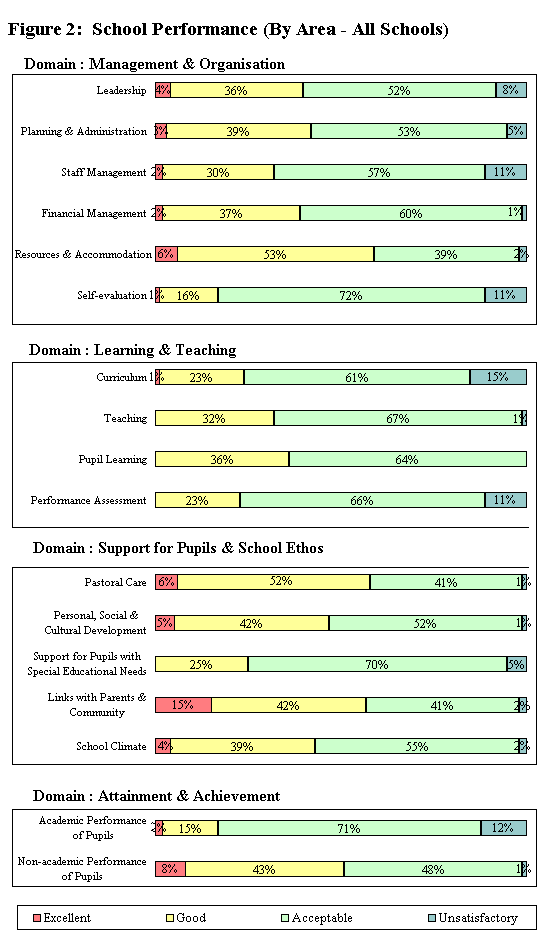

2.1.2 Management & Organisation
|
Observations regarding the individual aspects in this domain are presented as follows:
(1) Leadership
- The performance of the schools was similar in the two aspects under "leadership". 40% of the schools were rated as good or excellent in both "professional competence" and "working relationship" (Figure 3).
- Among the schools inspected, secondary schools had better performance, with slightly more than half of the schools (53%) being rated as good or excellent in "professional competence"(Appendix 5).
- For those schools which were rated as good or excellent in leadership, the major strengths of the principals and senior staff included:
- having good experience in both teaching and administration, and hence, being able to help the schools formulate appropriate school goals and development strategies
- being familiar with education reform and recent developments in education
- forward-looking and proactive in initiating new ideas and school-based projects
- having established sufficient channels of communication among staff and the school management
- For those schools which were rated as unsatisfactory in leadership, the major weaknesses included:
- failure to monitor and co-ordinate various aspects of work in the school effectively
- failure to consider views or suggestions from staff and to involve them in decision-making
| Professional Competence | | Working Relationship |
 | |  |
| |
Figure 3 Leadership  |

(2) Planning and Administration
- 42% and 48% of the schools had good or excellent performance in the aspects of "management framework" and "school policy" respectively (Figure 4).
- "General administration" was the weakest aspect in this area, with only 34% of schools being rated as good or excellent.
- A breakdown of the data shows that the secondary schools had better performance than primary schools particularly in "school policy" and "general administration" (Appendices 4 & 5).
- The key strengths in this area of work included:
- clearly stated working procedures and comprehensive handbooks or documents, providing clear guidelines and relevant information for teachers
- a well-organised management and administrative framework for school-based management
- a well-defined school mission as well as clearly stated aims of education, which were widely supported by teachers
- an effective filing system
- sufficient support from the School Management Committee
- The key weaknesses included:
- failure to set up a good contingency plan for crisis management
- failure to prioritise the goals and programmes as listed in the school annual plan
- lack of clearly-defined roles and responsibilities for individual functional teams and staff, hence, adversely affecting the co-ordination among them
| Management Framework | | School Policy | | General Administration |
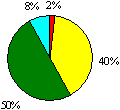 | |  | | 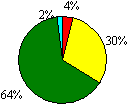 |
| |
Figure 4 Planning and Administration  |

(3) Staff Management
- 40% of the schools were rated as good or excellent in the aspect of "deployment of staff" (Figure 5).
- The performance of the schools in the aspect of "staff co-ordination" had much room for improvement. Though 32% of the schools displayed strengths in this aspect, 20% of the schools were rated as performing unsatisfactorily.
- Similarly, schools' performance in "effectiveness of senior staff" had to be further improved. Only 32% of schools were rated as good in performance and 10% of schools were rated as performing unsatisfactorily.
- Similar to the past few years, "staff development and appraisal" was a relatively weak aspect. Only 22% of the schools were rated as having good or excellent performance while 12% of schools were rated as performing unsatisfactorily. However, it was pleasing to find that more schools had adopted a formal staff appraisal system.
- The major strengths in this area of work included:
- school management's support for staff to pursue professional training
- assignment of duties based on the qualifications, experience and expertise of the staff
- The major weaknesses in this area of work included:
- inadequate involvement of the basic rank teachers in school improvement and school policies
- lack of professional sharing and discussion among teachers
- existing communication channels among staff not fully utilised
| Deployment of Staff | | Staff Co-ordination | | Effectiveness of Senior Staff | | Staff Development and Appraisal |
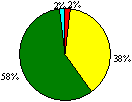 | | 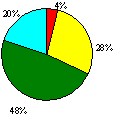 | | 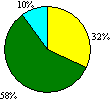 | | 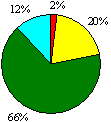 |
| |
Figure 5 Staff Management  |

(4) Financial Management
- 46% of the schools were rated as having good or excellent performance in "budgeting" (Figure 6).
- The schools were generally weak in overall planning and monitoring of expenditure as only 32% of the schools were rated as having good or excellent performance. However, it was pleasing to find that none of the schools was rated as having unsatisfactory performance.
- The schools inspected had the following strengths in this area of work:
- a well-established school expenditure record system
- good attempts to acquire resources from various sources
- school expenditures properly monitored
- allocation of school resources in a flexible manner
- The major weaknesses included:
- failure to evaluate the school expenditures on a regular basis
- the programme budget was not appropriately linked to the school development plan
| Budgeting | | Monitoring & Evaluation |
 | | 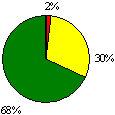 |
| |
Figure 6 Financial Management  |

(5) Resources and Accommodation
- Similar to the findings in the previous two years, "resources and accommodation" was the strongest area in this Domain of Management and Organisation. The primary schools in general performed better than the secondary schools in this area of work (Appendices 4 & 5).
- 66% of the schools were rated as good or excellent in "provision of resources" and none of the schools were found to have unsatisfactory performance (Figure 7).
- Slightly more than half (52%) of the schools were rated as good or excellent in "organisation & use of resources and space". Despite this generally good picture, 4% of the schools were rated as unsatisfactory in performance.
- The schools displayed the following strengths in the area of "resources and accommodation":
- well-equipped school accommodation, with adequate provision of audio-visual equipment, information technology (IT) equipment and other teaching aids
- systematic records of teaching resources and inventory items
- good maintenance of the school premises
- On the other hand, schools could further improve in the following dimensions:
- better utilisation of space so as to develop a better learning environment for the pupils
- enrich and update the stock of library resources
- encourage pupils to make better utilisation of library resources for self-learning
| Provision of Resources | | Organisation & Use of Resources and Space |
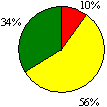 | | 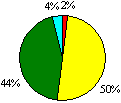 |
| |
Figure 7 Resources and Accommodation  |

(6) Self-evaluation
- In the domain of Management and Organisation, "self-evaluation" (SSE) was the weakest area of the schools inspected. Similar to the findings in previous years, the performance of the schools with regard to SSE needed improvement.
- Only 10% of the schools were rated as good or excellent in the aspect of "evaluation tools and procedures", while even more (12%) schools were rated as performing unsatisfactorily (Figure 8).
- Besides, only 34% of the schools had actively involved their staff in conducting evaluation.
- "Reporting and action" was a relatively weak aspect, with only 8% of the schools rated as having good performance and 14% of the schools rated as having unsatisfactory performance.
- The key weaknesses of the schools identified in this area included:
- failure to establish clearly defined procedures and effective tools to monitor and evaluate various aspects of school work
- evaluation criteria not clearly defined or appropriately aligned with the annual targets
- failure to make use of the evaluation findings to revise long-term goals and to work out the annual targets for the next year
- failure to conduct thorough evaluation of the effectiveness of individual school programmes
| Evaluation Tools and Procedures | | Staff Involvement | | Reporting & Action |
 | |  | |  |
| |
Figure 8 Self-evaluation  |

2.1.3 Learning & Teaching
Observations regarding the individual aspects in this domain are presented as follows:
(1) Curriculum
- Schools performed slightly better in "curriculum planning and organisation" than in "curriculum management" (Figure 9). 28% and 20% of schools were rated as good or excellent in the two aspects respectively. While 8% of the schools were considered to be performing unsatisfactorily in "curriculum planning and organisation", 22% of the schools were rated as having unsatisfactory performance in "curriculum management".
- A breakdown of the data shows that primary schools inspected needed improvement in the area of curriculum. Though both the primary schools (20%) and secondary schools (18%) had weak performance in "curriculum management", 13% of the primary schools were also rated as having unsatisfactory performance in "curriculum planning and organisation" while no secondary schools inspected got such a low rating (Appendices 4 & 5).
- For those schools which were rated as having good or excellent performance in curriculum planning and management, the key strengths included:
- the formal curriculum appropriately linked to a well-designed informal curriculum, including a variety of extra-curricular activities and cross-curricular elements, to provide pupils with balanced learning experiences
- attempts to enhance pupils' language proficiency through means such as extensive reading schemes in primary schools and appropriate language policy in secondary schools
- efforts to promote information technology in education through provision of resources and improvement in infrastructure
- effective means such as peer lesson observation to foster exchange of views and co-operation among teachers in the same subject department
- The major weaknesses in curriculum planning and management included:
- the formal curriculum appropriately linked to a well-designed informal curriculum, including a variety of extra-curricular activities and cross-curricular elements, to provide pupils with balanced learning experiences
- lack of effective monitoring and evaluation of the implementation of the school curriculum
- lack of adequate opportunities for professional development and exchanges among teachers
- heads of subject departments, in particular those in primary schools, not assuming an effective role in curriculum leadership
| Curriculum Planning & Organisation | | Curriculum Management |
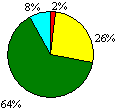 | | 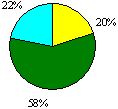 |
| |
Figure 9 Curriculum  |

(2) Teaching
- Among all the aspects under "teaching", schools did best in the aspect of "attitude and knowledge". Teachers in 46% of the schools were considered to possess good attitude and knowledge for teaching (Figure 10).
- "Teaching strategies and skills" and "classroom climate" were the relatively weak aspects in the schools inspected this year. Only 20% and 30% of the schools were rated as good in these two aspects respectively.
- While the performance of primary schools was better in cultivating a good classroom climate for learning, teachers in secondary schools attained higher ratings in the aspect of "attitude and knowledge" (Appendices 4 & 5).
- The schools inspected displayed the following strengths in teaching:
- The schools inspected displayed the following strengths in teaching:
- clear and systematic exposition by the teachers
- effective classroom management
- good teacher-pupil relationship
- The major weaknesses of the teachers in teaching included:
- adoption of a teacher-centred approach resulting in inadequate teacher-pupil interaction
- lack of variety in teaching strategies and learning activities, especially those catering for learner differences
- questioning techniques not effective enough to invite active pupil discussion and to inspire higher-order thinking
- low expectation of the pupils such that their potentials were not fully stretched
- emphasis on imparting subject knowledge with inadequate attention paid to developing pupils' skills, attitudes and creativity
- infrequent use of teaching aids, including IT to help enhance the effectiveness of teaching
| Attitude & Knowledge | | Teaching Strategies and Skills | | Classroom Climate |
 | | 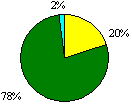 | | 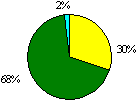 |
| |
Figure 10 Teaching  |

(3) Pupil Learning
- The quality of pupil learning was good in slightly more than one-third (36%) of the schools (Figure 11).
- The majority (64%) of the schools were rated as having acceptable performance in pupils' "performance and progress in learning". The primary schools inspected this year displayed better performance in this aspect as compared with the secondary schools. 43% of the primary schools were rated as good in this aspect but only 24% of the secondary schools performed well (Appendices 4 & 5 ).
- Inspection findings revealed that most pupils were attentive and well-behaved in class. Many of them were motivated and showed interest in learning. Most pupils could follow teachers' instructions and finish their classwork and activities satisfactorily. They also completed their assignments conscientiously.
- Constrained by the modes of teaching, the following weaknesses in the area of "pupil learning" were noted:
- pupils being too passive in learning and dependent on teachers' instructions
- pupils' lack of initiative to raise questions and to pursue self-learning
- inadequate teacher-pupil interaction and collaboration among pupils in class
- pupils weak in critical thinking, problem solving skills and creativity
| Performance and Progress in Learning |
 |
| |
Figure 11 Pupil Learning  |

(4) Performance Assessment
- Among the three aspects in "performance assessment", schools obviously displayed better performance in the aspect of "assessment policy and system". 58% of the schools were rated as good in this aspect (Figure 12). Schools had a well-formulated assessment policy and system with clear guidelines for teachers. Besides, the frequency and quantity of assignments were considered to be appropriate.
- Less than one-tenth (8%) of the schools had adopted a sufficient variety of assessment methods to assess pupils' learning progress. Nevertheless, the majority of the schools still attained an acceptable level of performance in the choice of assessment methods. 6% of the schools were rated as unsatisfactory in this aspect. Most schools were able to set test/examination papers with appropriate length and coverage in subject content. Marking of assignments was also conscientiously done to help pupils improve on their learning.
- Nevertheless, there was room for improvement in the design of assignments. There was a need for a greater variety of assignments to help develop pupils' analytical ability, creativity and ability to pursue independent learning. Assessment questions of some schools were mainly on a factual-recall type.
- Schools were weak in the use of assessment information. Only 2% of the schools were rated as good and 20% of them were rated as unsatisfactory in this aspect. In fact, this was the weakest aspect of the schools in the domain of Learning and Teaching.
- Most of the schools did not make full use of the assessment information to evaluate the effectiveness of learning and teaching and to review the curriculum for continuous improvement. The function of assessment to facilitate effective learning could have been better utilised by many teachers.
| Assessment Policy & System | | Assessment Methods | | Use of Assessment Information |
 | |  | |  |
| |
Figure 12 Performance Assessment  |

2.1.4 Support for Pupils & School Ethos
Observations regarding the individual aspects in this domain are presented as follows:
(1) Pastoral Care
- Schools performed better in the aspect of "discipline, guidance and counselling", with 60% of the schools being rated as good or excellent (Figure 13). A majority (71%) of the secondary schools displayed good or excellent performance in this aspect of work (Appendix 5). The major strengths displayed by schools in this aspect included:
- cultivation of a caring and harmonious atmosphere facilitating the development of good characters and positive values in pupils
- effective implementation of a whole-school approach to discipline and guidance
- good collaboration between the Discipline Team and the Guidance Team as well as good co-ordination among all the teaching staff
- adoption of a positive approach to disciplining pupils, with more emphasis on rewards and reinforcement of pupils' good behaviour
- a good variety of preventive and developmental activities organised by the school to cater for the varied needs of pupils
- effective implementation of the referral mechanism
- good utilisation of resources, both inside and outside the school, to facilitate the organisation of guidance programmes and to enhance effectiveness of the programmes
- In the aspect of pastoral care, 40% of the schools showed acceptable performance. To further enhance the effectiveness of pastoral care, success criteria should be set for evaluation. In addition, training in counselling and guidance should be organised for teachers to enhance their skills in handling pupils' behavioural and adjustment problems.
- With regard to the aspect of "further studies and careers guidance", half of the secondary schools were rated as good or excellent. Their major strengths included:
- practical advice and updated information about further studies and careers provided for pupils
- organising a variety of activities on further studies and careers including visits to tertiary institutes and workplaces
- For the other half of the secondary schools which showed acceptable or unsatisfactory performance in this aspect, activities were seldom evaluated for further improvement. Greater effort also needed to be made to promote pupils' use of the information on further education and careers.
| Discipline, Guidance and Counselling | | Further Studies & Careers Guidance (for secondary schools only) |
 | | 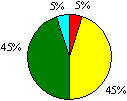 |
| |
Figure 13 Pastoral Care  |

(2) Personal, Social and Cultural Development
- Schools performed better in the planning and organisation of extra-curricular activities (ECA) than in implementing cross-curricular programmes. Slightly more than half (52%) of the schools were rated as good or excellent in respect of planning and organising ECA while less than half (42%) of them were awarded comparable ratings in the implementation of cross-curricular programmes (Figure 14).
- Schools performed better in the planning and organisation of extra-curricular activities (ECA) than in implementing cross-curricular programmes. Slightly more than half (52%) of the schools were rated as good or excellent in respect of planning and organising ECA while less than half (42%) of them were awarded comparable ratings in the implementation of cross-curricular programmes (Figure 14).
- a good variety of activities organised to enrich pupils' school life and to develop their potentials
- strong commitment of teachers and active participation of pupils in ECA
- good co-ordination among all the clubs and associations in school
- good utilisation of community resources and parents' involvement in organising ECA
- sufficient financial support provided by the school
- More than half (58%) of the schools showed only acceptable performance in implementing cross-curricular programmes. Their main weaknesses included:
- lack of a systematic approach to integrate cross-curricular themes into both the formal and informal curricula
- lack of good co-ordination and collaboration among subject departments and related committees in designing a coherent and developmental programme for pupils
- insufficient attention paid to sex education
- lack of an effective mechanism for monitoring and evaluating the effectiveness of cross-curricular programmes
| Extra-curricular Activities | | Cross-curricular Programmes |
 | | 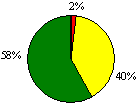 |
| |
Figure 14 Personal, Social and Cultural Development  |

(3) Support for Pupils with Special Educational Needs
- "Support for pupils with special educational needs" was the weakest area of the schools inspected over the past few years.
- Of the various aspects in this area, there was a need for improvement in the provision of learning support programmes as only 14% of the schools were rated as good (Figure 15). Furthermore, 8% of the schools were rated as unsatisfactory. The major weaknesses included:
- lack of an overall policy for the provision of support for pupils with special educational needs, especially for those with severe learning difficulties
- inappropriate criteria for selection of pupils for remedial teaching
- inappropriate design of remedial teaching programmes and ineffective teaching strategies
- inadequate monitoring and review of remedial programmes
- Regarding the provision of caring services, 41% of the schools were rated as good and the rest of them (59%) were rated as acceptable. The main strengths of those schools that performed well included:
- fostering a caring and warm atmosphere in the school
- inculcating pupils with positive attitudes towards individual differences
- making special arrangements for disabled pupils in school
- implementing an effective "Big Brothers and Sisters" scheme
- providing induction programmes for newly arrived children
- With respect to caring services, the special schools demonstrated obvious strengths by incorporating well-designed learning programmes into their daily arrangements for pupils, such as special lunch arrangements and bus services.
| Learning Support Programmes | | Caring Services |
 | |  |
| |
Figure 15 Support for Pupils with Special Educational Needs  |

(4) Links with Parents and Community
- Schools performed better in the aspect of "home-school co-operation" than in the aspect of "links with external organisations". More than half (62%) of the schools were rated as good or excellent in the aspect of "home-school co-operation" while 52% of the schools got comparable ratings in the other aspect of "links with external organisations" (Figure 16).
- With regard to the aspect of "home-school co-operation", the major strengths included:
- good communication between schools and parents through various channels
- parents being well informed of the pupils' progress as well as the latest development of the school
- an effective Parent-Teacher Association (PTA), that demonstrated commitment of both teachers and parents in organising school activities
- additional support and resources contributed by PTA for the school's development
- a good partnership between schools and parents to facilitate pupils' healthy development
- With regard to the aspect of "links with external organisations", the schools that performed well displayed the following strengths:
- good utilisation of community resources to facilitate the organisation of programmes for pupils and to promote professional development of the staff
- establishment of a good school image in the community through active participation in social and community services
- keen to acquire outside funds and assistance from tertiary institutions to facilitate the launch of educational innovations
- Some special schools had shown good effort in working together with external agencies for promoting integration of their pupils into the community.
| Home-school Co-operation | | Links with External Organisations |
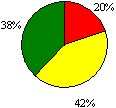 | | 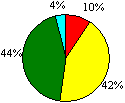 |
| |
Figure 16 Links with Parents and Community  |

(5) School Climate
- Of the two aspects in this area, the schools inspected this year performed slightly better in "human relationship" than in "morale" (Figure 17).
- With respect to the aspect of "human relationship", 48% of the schools were rated as good or excellent. The major strengths of these schools included:
- both teachers and pupils having a strong sense of belonging
- both teachers and pupils having a strong sense of belonging
- a good peer relationship among pupils
- a good relationship between teachers and pupils and even the minor staff
- pupils enjoying their school life
- most staff working with enthusiasm to strive for the best for their pupils
- close links with alumni through various channels
- As regards "morale", the schools that performed less satisfactorily did not establish a good rapport between the management and the teaching staff. Communication between teachers and the senior management especially in the process of decision-making needed to be improved.
| Morale | | Human Relationship |
 | | 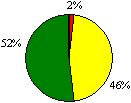 |
| |
Figure 17 School Climate  |

2.1.5 Attainment & Achievement
Observations regarding the individual aspects in this domain are presented as follows:
(1) Academic Performance of Pupils
- In respect of "academic attainment", 28% of the schools were rated as good or excellent (Figure 18). Pupils in the primary schools concerned achieved good bandings in the Secondary School Places Allocation System (SSPA) and obtained good results in the Hong Kong Attainment Test (HKAT), while the pupils in the secondary schools concerned achieved good results in the Hong Kong Certificate of Education Examination (HKCEE) and the Hong Kong Advanced Level Examination (HKALE).
- In 18% of the secondary schools and 7% of the primary schools which were rated as performing unsatisfactorily, pupils' results in public examinations or their district bandings in the SSPA were unsatisfactory (Appendices 4 & 5).
- Not many pupils in the schools inspected participated in a good range of academic-related activities and obtained academic awards. As such, only 6% of the schools were rated as good in "academic-related achievements". Nevertheless, a majority of schools (80%) still encouraged their pupils to participate in both intra-school and inter-school activities and contests of an academic nature.
| Academic Attainment | | Academic-related Achievement |
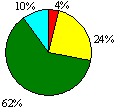 | |  |
| |
Figure 18 Attainment & Achievement  |

(2) Non-academic Performance of Pupils
- Discipline in over two-thirds of schools (68%) was good or excellent (Figure 19). The pupils were generally well-behaved and polite. Their attendance and punctuality rates were high.
- In 34% of the schools, pupils' "participation and achievement in ECA" were rated as good or excellent and only 2% of the schools were rated as unsatisfactory. The schools performed well in organising and encouraging their pupils to participate in a wide variety of ECA (including inter-school activities). Pupils took part in such activities with keen interest and gained a number of awards in sports, music and speech contests.
| Discipline | | Participation and Achievement in ECA |
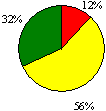 | | 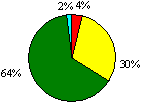 |
| |
Figure 19 Non-academic Performance of Pupils  |

2.2 Kindergartens
| 2.2.1 | Summary of Major Findings |
| | - The major inspection findings in the 2000/01 academic year revealed that kindergartens' performance in the domain of Support to Children and School Ethos was better than the other two domains (Figure 20).
- In the domain of Management and Organisation, the area on "utilisation of resources" was the strongest, whereas performance in the area "self-evaluation" was the weakest.
- In the domain of Learning and Teaching, the area on "children's learning" was rated the highest, whereas kindergartens' performance in the area of "assessment of learning experiences" was the weakest.
- Among the three areas in Support to Children and School Ethos, the strongest area was the "school climate", whereas kindergartens' performance in the area "caring and supporting services" was relatively weak.
|
| |
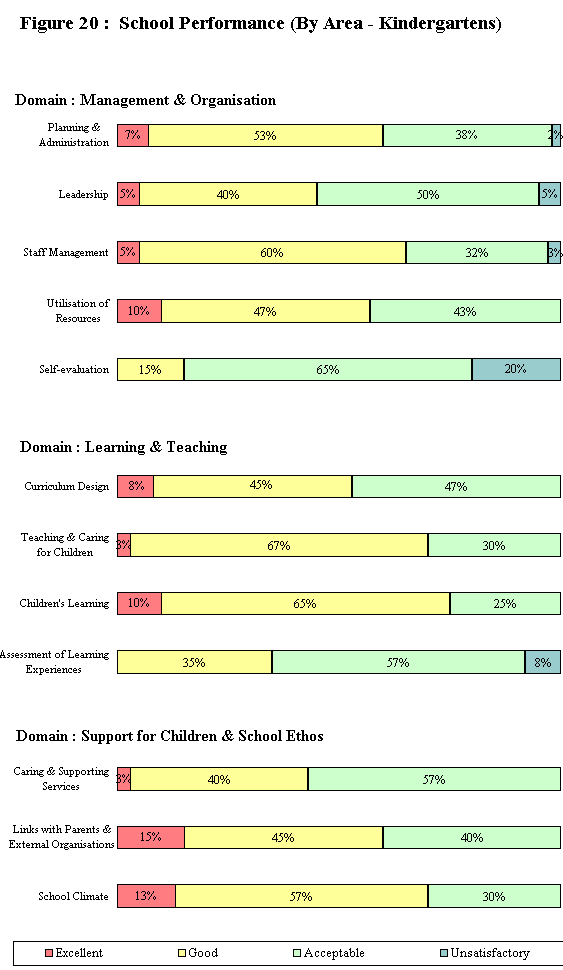 |

| 2.2.2 | Management & Organisation |
| | Observations regarding the individual aspects in this domain are presented as follows: |
| | (1) | Planning and Administration |
| | | - Among the three aspects in the area of "Planning and Administration", kindergartens showed outstanding performance in "school administration". 80% of the kindergartens were rated as Good or Excellent (Figure 21). The major strengths included:
- an effective filing system to enable easy retrieval
- Good arrangement and smooth implementation of daily work
- explicit safety measures and clear guidelines on crisis management
- With regard to "management framework", over half (55%) of the kindergartens were rated as Good or Excellent . Schools had well-defined duties and responsibilities for all staff. Guidelines on administration work on teaching were well prepared. The management was able to monitor and review the progress of the school plans effectively.
- More than half (55%) of the kindergartens were found to have room for improvement in "school policy". In general, the school aims aligned with their mission statements and aims of early childhood education in Hong Kong. However, development plans of most schools were not clearly formulated, thus having an adverse impact on the implementation of these plans.
|
| School Administration | | Management Framework | | School Policy |
 | | 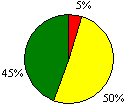 | |  |
| |
Figure 21: Planning and Administration  |

| | (2) | Leadership |
| | | - 45% of the kindergartens were rated as good or excellent in "professional competence" (Figure 22). The major strengths included:
- enthusiastic and proactive management with good leadership skills in staff management and school administration
- management being familiar with recent development in education and encouraging staff to initiate new ideas
- management monitoring school affairs effectively
- management valuing professional development and keen to promote staff development
- Only 5% of the kindergartens were rated as unsatisfactory in "professional competence". The major weaknesses included:
- inability to consider views or suggestions from staff
- lack of effective communication among staff and lack of opportunities to involve staff in decision making
|
| | |
| Professional Competence |
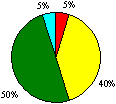 |
| |
Figure 22: Leadership  |

| | (3) | Staff Management |
| | | - Most kindergartens (75%) were rated as good or excellent in "staff qualifications and duties" (Figure 23). The major strengths of these schools included:
- possessing a high ratio of professionally trained teachers
- providing clear guidelines on administration work for smooth implementation of school work
- staff fully aware of their duties and responsibilities
- Regarding "staff development and appraisal", 65% of the schools were rated as good or excellent while 10% of the schools were rated as performing unsatisfactorily. The management encouraged and supported staff to pursue professional training. Schools had formulated staff development plans. Support services were given to newly appointed and inexperienced teachers. Most of the schools inspected had established a staff appraisal system which helped promote professional development of their staff. However, a fair and open appraisal system had yet to be developed in some of the schools.
- 55% of the kindergartens were rated as good in "staff co-ordination and liaison". Schools fostered effective communication among staff to promote staff co-operation and team spirit.
|
| | |
| Staff Qualifications and Duties | | Staff Development and Appraisal | | Staff Co-ordination and Liaison |
 | | 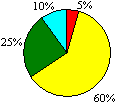 | |  |
| |
Figure 23: Staff Management  |

| | (4) | Utilisation of Resources |
| | | - Kindergartens performed well in this area of work. 65% and 50% of the kindergartens had good or excellent performance in "organisation and use of school premises" and "organisation and use of resources" respectively (Figure 24 ). The key strengths included:
- provision of a safe, hygienic and comfortable learning environment
- good utilisation of space for arranging play activities and display of children's work
- adequate provision of different varieties of teaching resources
- effective use of community resources and parents' assistance to support learning and teaching
- systematic storage of teaching resources and records
|
| | |
| Organisation and Use of School Premises | | Organisation and Use of Resources |
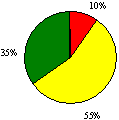 | |  |
| |
Figure 24: Utilisation of Resources  |

(5) Self-evaluation
- The performance of kindergartens with regard to "self-evaluation" left much room for improvement. Only 15% of the kindergartens were rated as good while 20% of the kindergartens were rated as unsatisfactory in this area (Figure 25).
- Most of the kindergartens had not yet established a self-evaluation mechanism to review the effectiveness of the school programme plans. Among the kindergartens that had established a self-evaluation mechanism, most of them were only at the starting stage. In these schools, the evaluation criteria were not clearly defined. Also, the self-evaluation results were not used to formulate follow-up action plans and school development plans.
| Evaluation System |
 |
| |
Figure 25: Self-evaluation  |

| 2.2.3 | Learning & Teaching |
| | Observations regarding the individual aspects in this domain are presented as follows: |
| | (1) | Curriculum Design |
| | | - Schools performed better in "curriculum management" than in "curriculum organisation". 60% and 45% of the kindergartens were rated as good or excellent in the above two areas respectively (Figure 26).
- Kindergartens formulated their curricula according to the aims of the Guide to Pre-primary Curriculum. Their curricula were able to take into account children's development in the physical, intellectual, linguistic, emotional, aesthetic and social aspects. However, schools tended to place undue emphasis on the intellectual aspect.
- For those kindergartens whose performance was rated as good or excellent in "curriculum organisation" and "curriculum management", the key strengths included:
- the setting up of a mechanism to monitor curriculum implementation and conducting regular curriculum reviews
- adequate teaching resources available, together with support from parents and community appropriately brought in to facilitate the implementation of the school curriculum
- children's abilities, interests and needs being considered in setting up an interesting and stimulating learning environment
- clear curriculum aims and strategies appropriately formulated to address children's developmental characteristics and needs
- In the same areas, however, weaknesses were displayed by whose schools performance was found to be unsatisfactory, the reasons being:
- curriculum being overloaded and demanding fast learning progress without due consideration to children's development
- requiring children to write before they were ready in eye-hand co-ordination and fine motor control
- undue emphasis on the training of reading, writing and computing skills
- inability to provide a balanced daily schedule with adequate time for physical and musical activities
- unsatisfactory curriculum linkage among the Upper Kindergarten Class, Lower Kindergarten Class and Nursery Class
- no proper follow-up on teachers' teaching programme review to improve the curriculum
|
| | |
| Curriculum Organisation | | Curriculum Management |
 | | 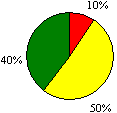 |
| |
Figure 26: Curriculum Design  |

(2) Teaching and Caring for Children
- Kindergartens performed well in this area. 70% of the kindergartens were rated good in "strategies and skills", and also 70% of kindergartens were rated good or excellent in "attitude and knowledge" (Figure 27).
- The major strengths of the performance of those teachers rated good or excellent included:
- provision of learning experiences built on children's prior knowledge and previously acquired skills
- opportunities were provided daily for children to experience individual learning, group learning and whole-class learning
- stimulating learning environment with interest corners set up
- a child-centred approach was adopted to provide children to learn through play and activities
- teachers with good communicative skills praised and encouraged children whenever appropriate
- through routine training, children's good habits, self-care skills and table manners were cultivated through positive encouragement
- teachers helped children to learn how to co-operate with others and to follow class rules on their own initiative
| Strategies and Skills | | Attitude and Knowledge |
 | | 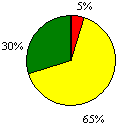 |
| |
Figure 27: Teaching and
Caring for Children  |

| | (3) | Children's Learning |
| | | - With regard to areas under "Learning and Teaching", kindergartens did best in "children's learning".
- In "performance and progress in the learning process", most kindergartens (75%) were rated good or excellent (Figure 28). Children enjoyed going to kindergartens and found learning pleasurable. They actively participated in various kinds of activities.
- Inspection findings revealed that:
- children were interested and motivated to learn and were willing to participate in various activities
- children were active in communicating with others
- children made good use of different interest corners to learn, explore and create
- children were proactive in play and learned and exchanged ideas with their peers in a pleasurable manner
- good living habits and self-caring skills were developed
|
| | | |
| Performance and Progress in the Learning Process |
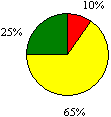 |
| |
Figure 28: Children's
Learning  |

| | (4) | Assessment of Learning Experiences |
| | | - Kindergartens' performance in "assessment policy and system" left much room for improvement. Only a quarter (25%) of the kindergartens performed well (Figure 29). These kindergartens had assessment policies with objectives matching children's overall physical and psychological development. Guidelines were provided for teachers' reference in adopting continuous assessment to evaluate children's development.
- A majority (65%) of the kindergartens were rated as acceptable and 10% of the kindergartens were rated as unsatisfactory in "assessment policy and system". The major weaknesses included:
- lack of variety of tasks given to children and undue emphasis placed on mechanical copying exercises
- dictations and examinations being used to assess children's abilities
- excessive emphasis of evaluation on facts and retentive memory
- continuous assessment ineffectively adopted in the observation and recording of children's development in various aspects
- Kindergartens performed relatively better in the "use of assessment information". 45% of the kindergartens were rated as good while 5% were rated as performing unsatisfactorily.
- Parents were regularly informed of their children's development. Records of children's performance were systematically kept. However, the use of continuous evaluation of children's development in different aspects was only at the starting stage. Children's assessment records were not fully utilised to review teaching effectiveness.
|
| | |
| Assessment Policy and System | | Use of Assessment Information |
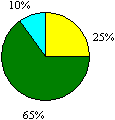 | | 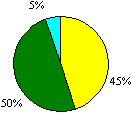 |
| |
Figure 29: Assessment of Learning Experiences  |

| 2.2.4 | Support to Children & School Ethos |
| | Observations regarding the individual aspects in this domain are presented as follows: |
| | (1) | Caring and Supporting Services |
| | | - 40% of the kindergartens were rated as good or excellent in "provision of services to children with special educational needs" and 45% were rated as good in "provision of support to children" (Figure 30). The major strengths displayed by kindergartens in these aspects included:
- close communication with parents to help children with special educational needs adapt to school life
- home-school co-operation to provide support and counselling to children with special learning and emotional problems
- helping newly admitted children settle in and preparing children about to be promoted to Primary One for primary school life
- conducting parent-and-child activities to promote harmonious parent-child relationship
|
| | |
| Provision of Services to Children with Special Educational Needs | | Provision of Support to Children |
 | |  |
| |
Figure 30: Caring and Supporting Services  |

| | (2) | Links with Parents and External Bodies |
| | | - Most kindergartens (70%) had frequent communication with parents (Figure31), maintaining close links and collaboration with them. Parents trusted and supported the schools. With respect to "links with external bodies", 50% of the kindergartens were rated as good or excellent.
- Kindergartens that had good or excellent performance in "home-school co-operation" showed the following major strengths:
- good communication between schools and parents through various channels, and keeping parents well informed of the operation and latest developments of the school
- parents being invited to observe children's participation in school activities and parents' opinions collected through questionnaires as reference for school improvement
- a good partnership between schools and parents to promote children's development
- Kindergartens (50%) that showed good or excellent performance in "links with external bodies" could make good utilisation of community resources to support school educational activities, to enrich children's learning experiences and to promote professional development of the staff.
|
| | |
| Home-school Co-operation | | Links with External Bodies |
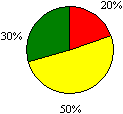 | | 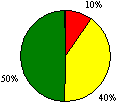 |
| |
Figure 31: Links with Parents and External Bodies  |

| | (3) | School Climate |
| | | - Kindergartens performed well in both "school atmosphere" and "interpersonal relationship". 70% of the kindergartens were rated good or excellent in "school climate" and "interpersonal relationship" (Figure 32). Schools with good school atmosphere usually performed well in the aspect of "interpersonal relationship". The major strengths of these kindergartens included:
- a harmonious and pleasant atmosphere in the school
- good relationships between and among the principal, staff and children
- staff being conscientious and eager to perform the allocated job duties
|
| | |
| School Atmosphere | | Interpersonal Relationship |
 | | 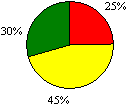 |
| |
Figure 32: School Climate  |





































































